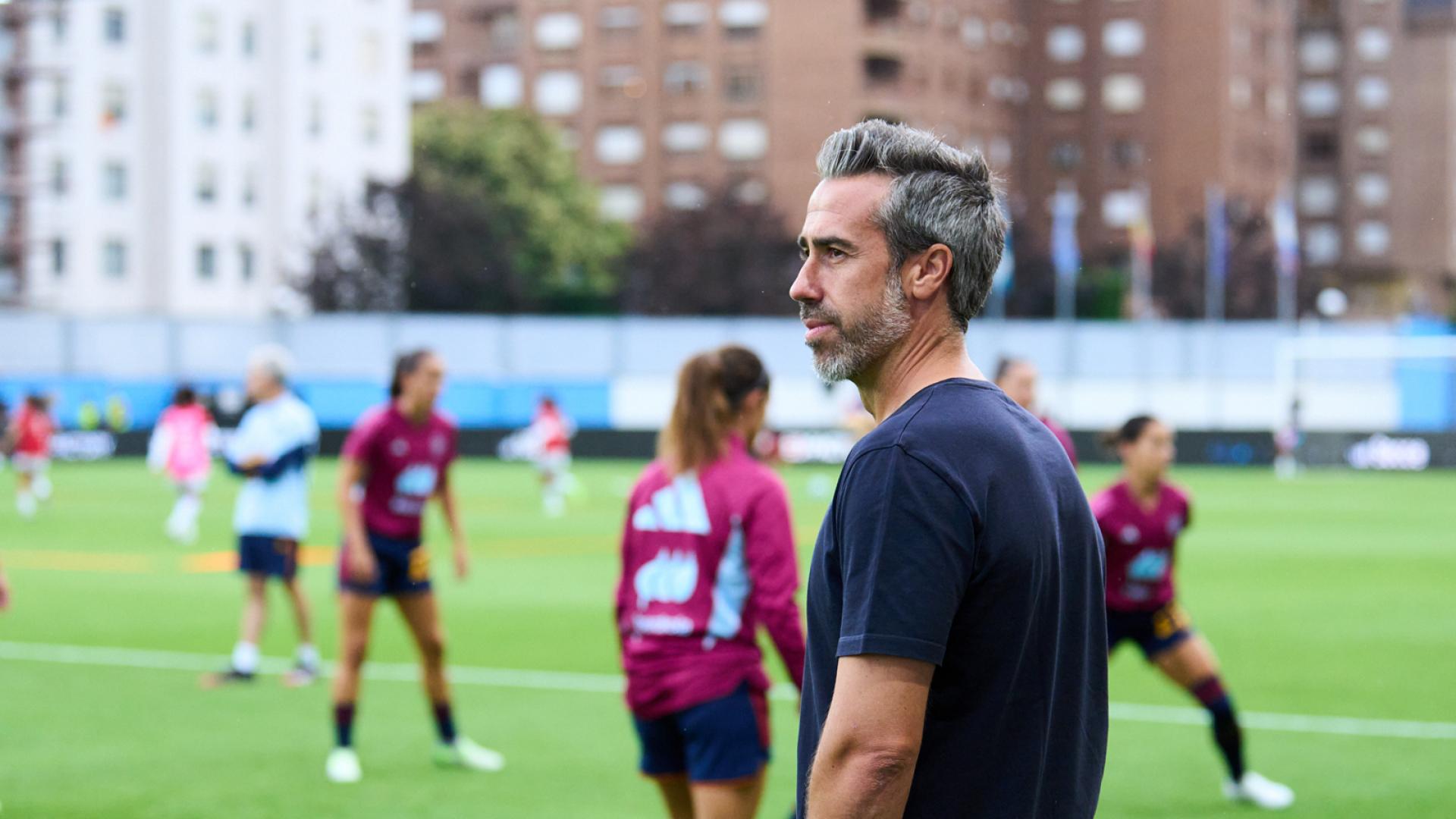Playing the role of coach and everything else besides, Vilda spent almost 7 seasons at CD Canillas where he also had his first contact with women’s football. Now, as the Spanish Women’s National Team Head Coach and Director of Football, Vilda gives a truly fascinating insight into the evolution of the Spanish women’s game and discusses his pride in people visiting from all over the world to learn about the Spanish philosophy and methodology. Involved in women’s football for 15 years with the Federation project, he is perfectly placed to explain why the Spanish ecosystem is so different to other models.
Good practice
-
A good scouting process to detect quality players, helped by regional federations.
-
An evolving methodology.
-
A playing philosophy that is instilled in players at U15 level and maintained right through to senior level.
Watch interview
Read summary
Part 1: Vilda’s pathway into coaching
In the first part of the interview, Vilda discusses his pathway into coaching. He explains that after sustaining serious knee injuries, his dream of playing football at the highest level was destroyed, but not wishing to give up on a career in football, he moved into coaching and spent several years with CD Canillas, a small neighbourhood club in Madrid. Taking on many roles aside from coaching, he also had his first contact with women’s football at Canillas who competed at national level. He also looks back on some of the big names in coaching who he had the privilege to be coached by.
Part 2: The Spanish model. Why is it different?
In the second part of the interview, Vilda points out how football has evolved in Spain in the last 15 years since he began working in the Federation. In the beginning there was a huge gap between them and Nordic countries, particularly on a physical level. But, believing that Spain has a way of understanding football and a style of play that unites them, his players were selected based on quality, regardless of their physical condition, knowing that this was a training issue that would be resolved in the future. Today, he is proud that people come from all over the world to study the Spanish methodology.
Part 3: The Spanish style of play: a philosophy
In this section of the interview, Vilda talks about his work during and in between training camps, and how preparation for the next one begins as soon as the last one finishes. He discusses his footballing philosophy and why it is so important to him that his teams play with such a distinctly recognisable style. He explains that this philosophy of the game is based on a way of playing to win and it is a process that begins at U15 level and continues right up to senior level. He also points out that continuous training is given to the coaches to ensure this philosophy is understood by the main people involved in the development of players.
Part 4: The Spanish youth system and player development
In the final part of the interview, Vilda explains how Spanish clubs are moving ahead not only with their first teams, but also, and even more so, with their youth teams. He states that certain clubs stand out and are an example of the path to follow in terms of maintaining a solid youth academy. He goes on to discuss how his work at national level with the different age groups supports player development as it gives them the international competitive stimulus that they would not have if they were not in the national team. It also gives players the chance to improve because they are playing with the best against the best.




















